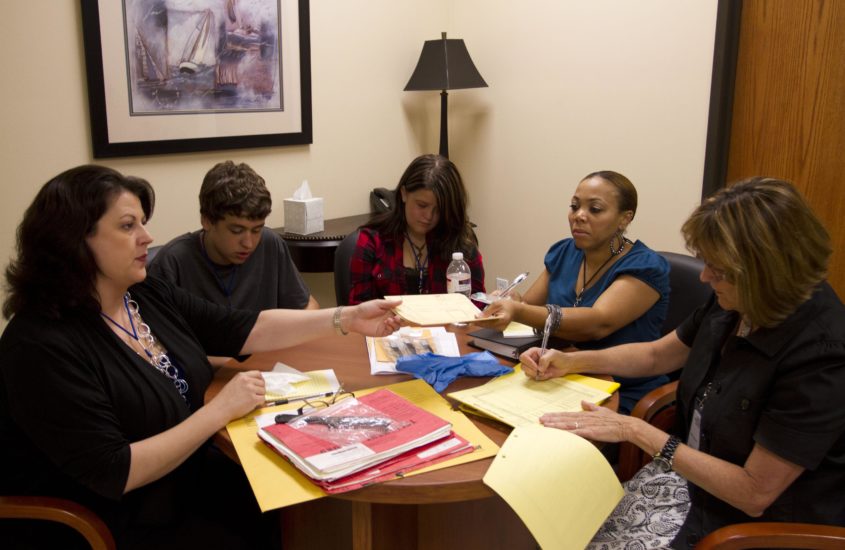Westgate Mall Nairobi – Why some questions aren’t yet answered.


The very difficult process of collecting information on a missing person, including DNA references.To begin with, while for many the attack is a news story, to those involved it is a painful process that does not end with the media coverage. We should pause to remember them and their loved ones.
To begin with, while for many the attack is a news story, to those involved it is a painful process that does not end with the media coverage. We should pause to remember them and their loved ones.
Families are still awaiting word on the status of their missing and now presumed deceased loved ones from the Westgate Mall attack in Nairobi. Clear information on the number of attackers involved and possibly killed during the siege is also lacking.
The fact that there are still questions is clear, but what may not be clear to many is the reason why or the impact of this lack of clarity.
The why – one of the most challenging areas in a mass fatality event is to determine the number of victims and then to positively identify them. This is even further complicated when the event is not an accident but an intentional attack, such as what occurred at the Westgate Shopping Mall, because the bad guys are often commingled with the victims.
Like almost every mass fatality event I have been involved in, the Westgate Mall attack involves victims, and likely attackers from multiple nations. The first step is to collect information on those who are missing. Without a central database or system to collect this information in, it is provided to various agencies in multiple countries. Often many family members and friends will report their missing loved ones to several different agencies. Not everyone will describe or provide consistent information about their missing loved ones, so the same people will appear more than once. They will have different spellings or name combinations. Each agency then forwards their list to their representatives in Nairobi, or directly to the Kenyan Government.
The initial list of missing people is much larger than the actual number of deceased bodies recovered from the ruins of the mall. The list will include some who were rescued, some who escaped, and also some who were not present. So the Kenyan authorities must initiate contact through national representatives or directly with families to ascertain if the missing have survived or are still missing and therefore likely dead.
If the loved ones are still missing then the Kenyan authorities must collect and build a profile of that missing person. That profile includes medical / dental records, fingerprint files, DNA samples and a very detailed questionnaire developed by INTERPOL. This takes weeks, and not all families can or want to provide this information.
While this occurs the Kenyan authorities, supported by international forensic teams will have started the recovery of bodies from the Mall, as well as those who died while receiving medical treatment. They must also complete detailed profiles of the bodies. These profiles will include x-rays, dental charts, DNA profiles, and completion of a detailed examination and report, again developed by INTERPOL. This process should be completed for each of the human remains that is recovered.
Sadly and undoubtedly difficult for the families, many of the deceased are likely fragmented. Furthermore, each fragment should be examined and a profile completed. This takes a lot of time. Each fragment needs to be examined because in some cases a small fragment may be the only human remains identified for a missing person. In one event I was involved in, a single person was identified from 289 separate fragments.
It is also important to separate those responsible for the attack. Often their families do not report them missing. In some cases, they may provide a DNA reference or one may be available from other sources.
When a missing persons’ profile matches that of a dead body, then a positive identification can be made and those remains can be released to the family. This process can take weeks or months, and in some cases years. The longer times are often a result of the further DNA testing and comparison for the deceased who have few records, or when the bodies are badly damaged from fire or other trauma – sadly the case for some in the Westgate Mall Attack.
Could this process go faster? In some cases yes, but rushing often results in mistakes. Fortunately, the INTERPOL Disaster Victim Identification community has offered, and the Kenyan authorities have accepted help from them, adding needed resources.
The impact – for many of the families, life may stop. No forward movement only waiting, waiting for confirmation of their worst fears. Logic tells us bystanders and onlookers, that if a loved one is not in hospital or have not come home, they must be deceased. But this is an emotional issue. For many, hope that the loved one is alive is stronger and more palatable than the accepting the loss, without the proof of the body. This is key difference in mass fatalities.
Even for those who accept the loss, without the identified remains of their loved ones the death is not recognized by the legal system. Without the body there is no death certificate. Without a death certificate, the process of changing one status and probate cannot occur. So the living wait…
For further reading:
- Official INTERPOL Press Release regarding deployment to Kenya
- CNN.com: Kenya mall shooting: Dozens of families unsure if loved ones are dead or alive
- CSMonitor.com: Progress of ongoing investigation and recovery efforts
- CaptialFM.co.ke: Challenges of current search and recovery efforts
